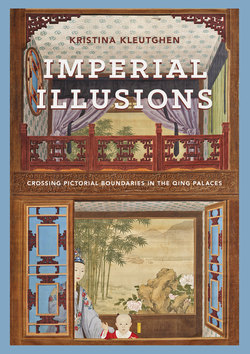Читать книгу Imperial Illusions - Kristina Kleutghen - Страница 77
На сайте Литреса книга снята с продажи.
Оглавлениеfound in woodblock-printed publications on all manner of subjects, inherently extend into the realm of art and art history because they are visual material with information to be interpreted beyond mere subject matter. Tu are often contrasted with more specific words such as “picture” or “painting” (hua) and “image” or “portrait” (xiang), which typically connoted works of art in contrast to diagrams, but none of these terms has a simple definition.38 In the late imperial period, hua and xiang were often used interchangeably to describe the illustrations in woodblock-printed literature, works with aesthetic effects on the viewer or reader. However, similar or even identical illustrations found in other printed contexts, such as anthologies of moralizing stories or biographies of exemplary figures, were often referred to as tu because of their functional value as didactic materials.39 Nian’s tu were intended to be used as templates for producing Western-style paintings, but do not themselves make any visual claim to be paintings. Instead, these illustrations and diagrams convey the technical basis of the relationship between representation and visual perception that was required to produce illusionistic paintings.
The eight sections of illustrations begin with the basic geometry required for drawing architectural features and spaces with linear perspective, and gradually introduce more complex forms and spaces before culminating in fully three-dimensional figures that cast shadows. Nearly all of the very limited prose text that inconsistently accompanies the illustrations is made up of straightforward step-by-step instructions for drawing lines between certain points using a straightedge in order to create the represented figures. The repetitive precision of these brief passages gives the entire treatise an extremely technical feel, in line with Nian’s other publications as well as the mathematical basis of linear perspective. By at least the seventeenth century in Europe, artists who were capable of using perspective scientifically, and whose work therefore seemed to connect the space represented in a painting with the space occupied by a viewer, were distinguished from those with an incomplete grasp of the “scientific rigor” required to achieve such effects.40 Given Nian’s personal devotion to mathematics, it is unsurprising to find the same rigor and exactitude in both the instructions and illustrations of The Study of Vision, although this is not a common feature of huapu.
Such technical precision, as well as the predominantly pictorial rather than textual nature of the treatise, is immediately visible in Nian’s first image (figure 2.1), a faithful but simplified outline mirror-image copy (perhaps traced?) of the first plate from Andrea Pozzo’s Perspectiva pictorum et architectorum (figure 2.2). The image depicts the artist’s tools required for perspective, or, from Nian’s view, those necessary to create European- style paintings: a drafting board with paper, compasses, straightedges, T-squares, and technical drawing pens in an ink pot. Immediately differentiating The Study of Vision from standard late imperial Chinese painting practices, in which the paper lay flat on the table, the upright position of the painting surface in this illustration also implies a difference in the pictorial outcome. The quality of the lines used to create this illustration is representative of those found throughout the treatise: all are fine, uniformly thin, and unmodulated.
